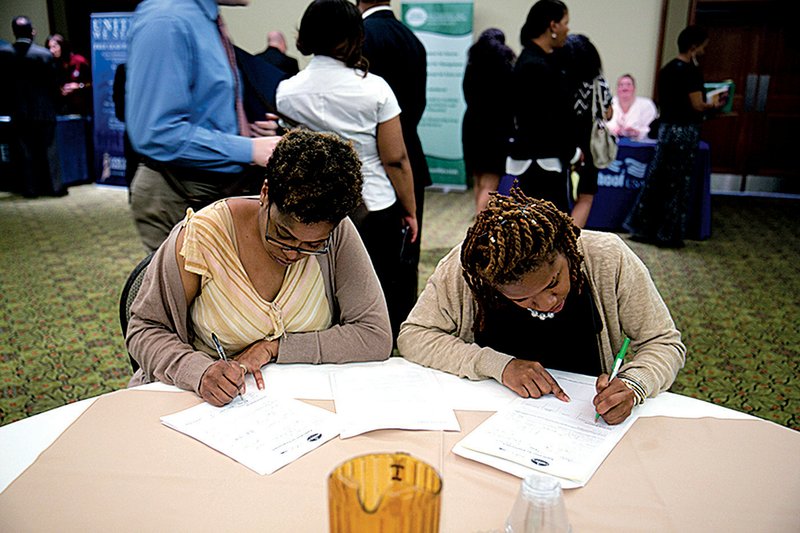Job openings in the United States rose in May as employers grew more optimistic that demand will strengthen as the effects of payroll tax increases and federal budget cuts wane.
The number of positions waiting to be filled grew by 28,000 to 3.83 million from a revised 3.8 million the prior month, the Labor Department said Tuesday. The pace of hiring also increased.
Companies are taking on workers as stronger sales of homes and automobiles signal that demand will pick up in the second half of the year. Today’s figures follow data last week that showed the economy added more jobs than forecast in June, giving Federal Reserve policymakers room to dial back record bond purchases aimed at spurring hiring and growth.
“This sets the stage for a stronger second-half outlook for consumption,” Neil Dutta, head of U.S. economics at Renaissance Macro Research LLC in New York, said before the report. “The improvement in employment and the improvement in wages suggest aggregate incomes are rising quite nicely.”
Tuesday’s data put the labor market picture in sharper focus after the June employment report, which showed payrolls rose more than forecast and the biggest year-over-year gain in hourly earnings since July 2011.
Payrolls climbed 195,000 for a second straight month, while revisions added 70,000 jobs to the employment count in April and May, the Labor Department reported last week. The nation’s unemployment rate held at 7.6 percent, while hourly earnings in the year ending in June advanced 2.2 percent.
Another report today showed more small businesses in June said they plan to add workers. The National Federation of Independent Business said its measure of job creation plans was the fourth-highest since 2007. The Washington based group’s index of small business optimism eased last month to 93.5 from 94.4 in May.
Tuesday’s Jobs Openings and Labor Turnover Survey, or JOLTS, showed the number of people hired increased to 4.44 million in May, pushing the hiring rate to 3.3 percent from 3.2 percent.
Total firings, which exclude retirements and other voluntary departures, were little changed at 1.74 million.
Another 2.2 million people quit their jobs in May, up from 2.19 million the prior month. The rate of resignations held at 1.6 percent. It averaged 2 percent during the previous expansion and went as high as 2.3 percent in late 2006.
In the 12 months ending in May, the economy created a net 1.8 million jobs, representing 51.9 million hires and 50.1 million separations.
Tuesday’s figures indicate there are about 3.1 job seekers for every opening, up from about 1.8 when the recession began in December 2007.
Retailers accounted for the biggest increase in available employment, while the category encompassing professional and business services showed a decrease.
Recovering home values and higher stock prices are putting Americans in a position to capitalize on lower interest rates and make big-ticket purchases. Consumer borrowing in the U.S. climbed in May by the most in a year as consumers stepped up credit-card use and took out more loans for automobiles. Credit increased to $19.6 billion after a revised $10.9 billion gain, the Fed said Monday.
An improved job market and rising consumer confidence are driving demand at companies such as Winnebago Industries Inc. That’s prompted the Forest City, Iowa-based maker of motor homes to take on more workers and increase overtime hours, according to Chairman and Chief Executive Officer Randy Potts.
In the quarter ended June 1, Winnebago’s shipments of motor homes were the highest in five years, Potts said on a June 27 earnings call, up 55 percent from a year earlier. Order backlogs have grown for six consecutive quarters.
“Labor is always a challenge when you’re growing,” Potts said. “We did find the people we needed to achieve the production rates we had scheduled. We worked a lot of overtime and we have hired a lot of people.”
The strengthening of demand and the improvement in the labor market are giving Fed policymakers room to begin backing off of their record $85 billion-a-month stimulus.
In a June 19 press conference after two days of meetings by the policy making Federal Open Market Committee, Chairman Ben Bernanke said the central bank may start scaling back its bond-buying program this year and end it in mid-2014 if the economy achieves the Fed’s growth objectives.
The unemployment rate last month compares with 8.1 percent in August 2012, the most recent figure available to Fed policymakers when they announced on Sept. 13 that they were expanding the central bank’s holdings of long-term securities with open-ended monthly purchases of $40 billion of mortgage debt in a third round of quantitative easing.
At the same time, economic growth and inflation still remain short of the Fed’s expectations. Policymakers are scheduled to release minutes of their June 18-19 meeting today.
Business, Pages 23 on 07/10/2013

